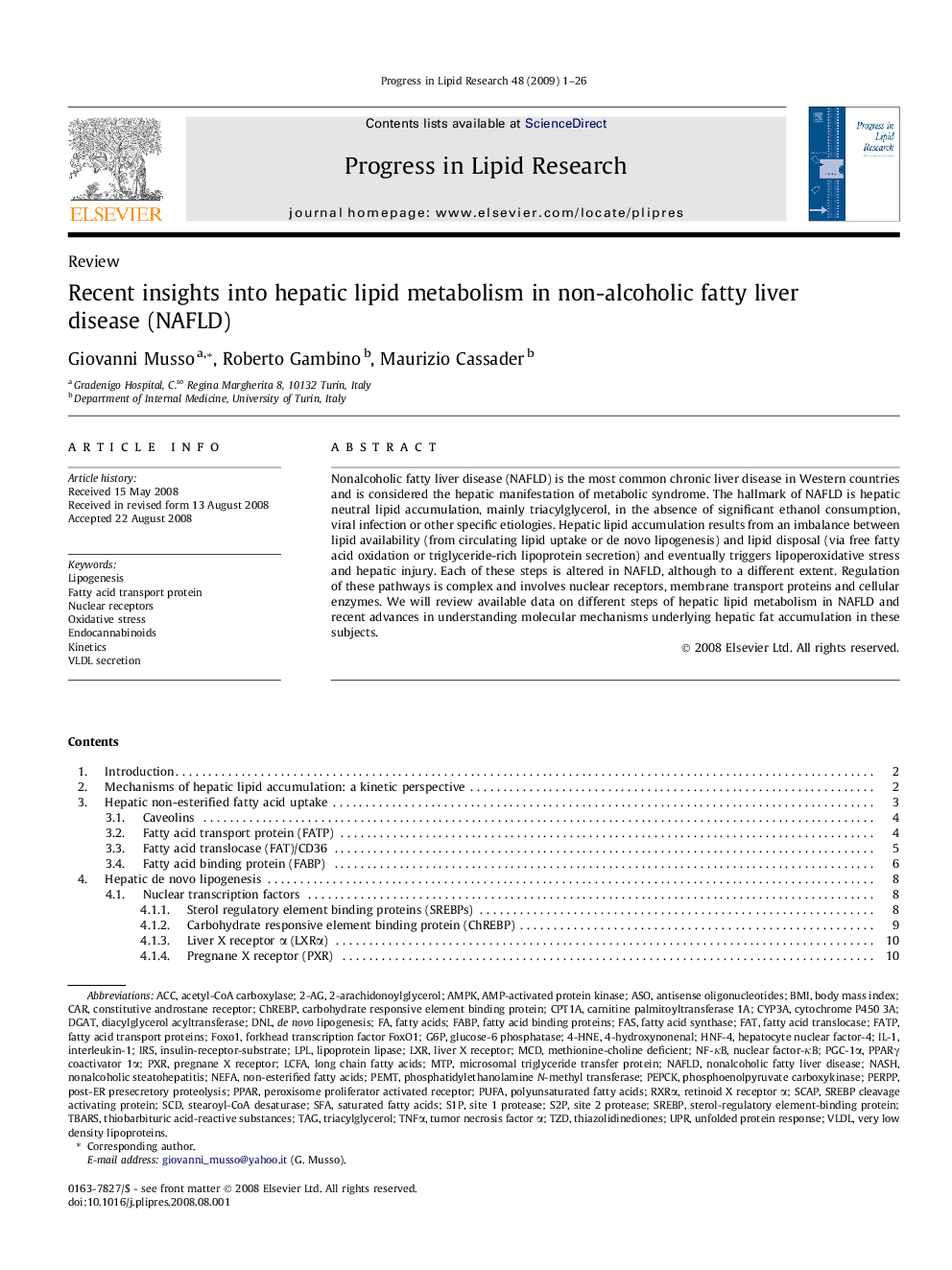| Article ID | Journal | Published Year | Pages | File Type |
|---|---|---|---|---|
| 2019291 | Progress in Lipid Research | 2009 | 26 Pages |
Nonalcoholic fatty liver disease (NAFLD) is the most common chronic liver disease in Western countries and is considered the hepatic manifestation of metabolic syndrome. The hallmark of NAFLD is hepatic neutral lipid accumulation, mainly triacylglycerol, in the absence of significant ethanol consumption, viral infection or other specific etiologies. Hepatic lipid accumulation results from an imbalance between lipid availability (from circulating lipid uptake or de novo lipogenesis) and lipid disposal (via free fatty acid oxidation or triglyceride-rich lipoprotein secretion) and eventually triggers lipoperoxidative stress and hepatic injury. Each of these steps is altered in NAFLD, although to a different extent. Regulation of these pathways is complex and involves nuclear receptors, membrane transport proteins and cellular enzymes. We will review available data on different steps of hepatic lipid metabolism in NAFLD and recent advances in understanding molecular mechanisms underlying hepatic fat accumulation in these subjects.
